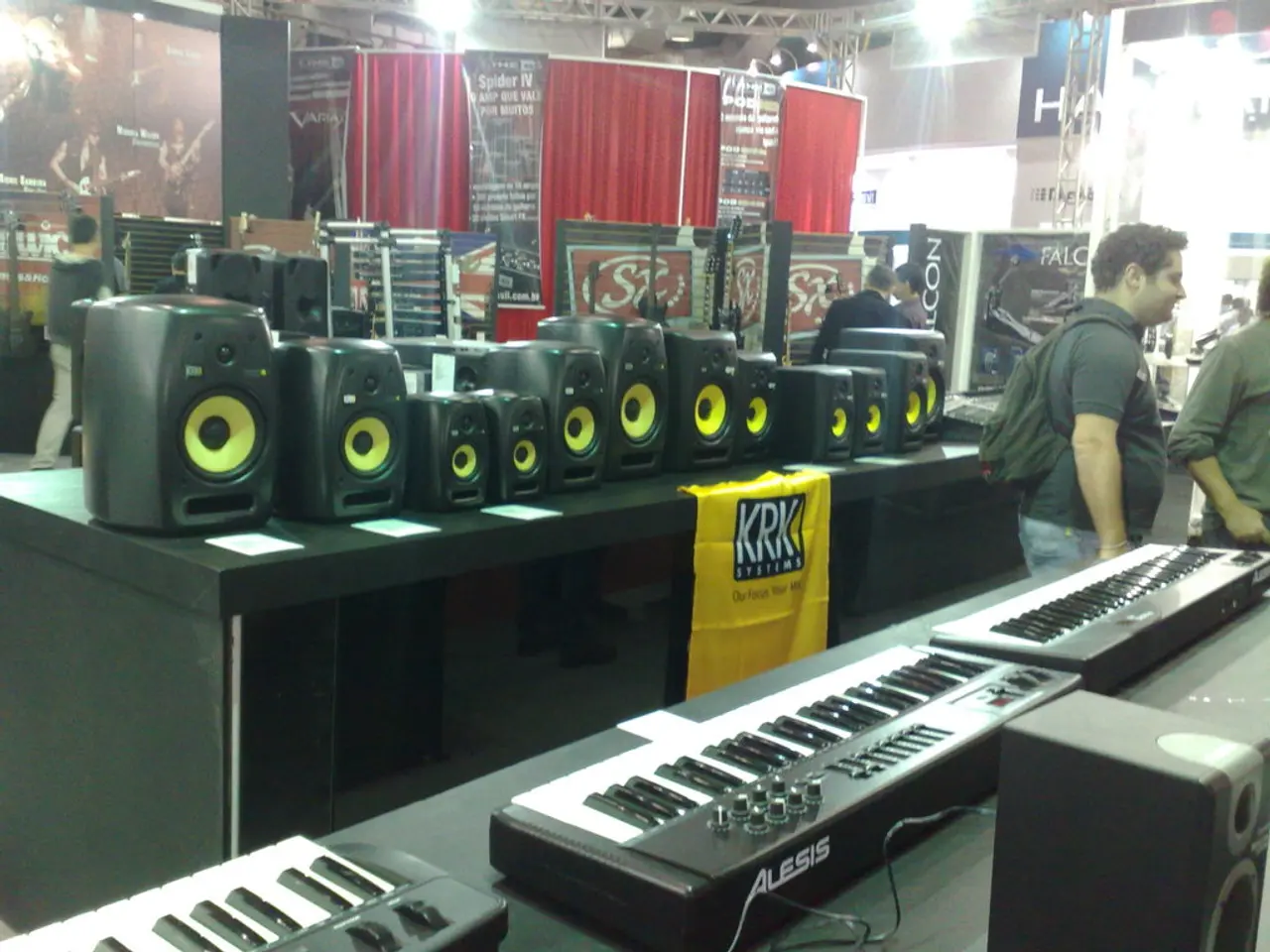Comprehensive Guide on Using a Multiband Compressor for Musical Beginners
Multiband compressors have become a staple in the world of audio production, thanks to their versatility and adaptability. These tools are particularly popular in mastering, where they help achieve a polished and professional sound.
In a sea of multiband compressors, some popular choices include FabFilter Pro-MB, iZotope's Neutron, OTT by Xfer Records, and Waves C6. These compressors offer a range of features that cater to various needs, from managing guitar harshness to tightening the low end in a track.
At its core, a multiband compressor divides audio into frequency bands, allowing for more precise control over specific parts of the sound spectrum. Crossover frequencies define where one frequency band ends and another begins. Key terms in compression such as threshold, ratio, attack, release, knee, and crossover frequencies are essential to understand when working with these tools.
Addressing Specific Issues
Multiband compression can help address specific issues in a track, such as tightening the low end or adding sparkle to the highs. For example, managing guitar harshness involves compressing the high end of the frequency spectrum to reduce unpleasant tones without affecting the entire track. In vocal recordings, sibilance can be managed using multiband compression by focusing on frequencies where sibilance typically occurs and applying targeted compression.
Advanced Techniques
Advanced techniques for using multiband compression in audio mixing and mastering include selective dynamic control per frequency band, parallel multiband compression, mid/side multiband compression, slow attack and fast release settings on selective bands, using frequency-specific saturation or harmonic enhancement in conjunction, dynamic EQ integration, checking mono compatibility, and conservative gain reduction.
Selective dynamic control per frequency band allows you to target problematic frequency ranges individually, for example, taming harshness in the upper mids while preserving low-end punch. Parallel multiband compression involves blending the compressed multiband signal with the dry signal to maintain dynamics and add thickness or consistency in specific bands without squashing the overall sound.
Mid/side multiband compression applies compression separately to mid (center) and side (stereo) components within frequency bands to enhance stereo width or control side information without impacting the central elements. Slow attack and fast release settings on selective bands can preserve the transient impact while controlling peaks dynamically, especially useful in bus or mastering compression.
Using frequency-specific saturation or harmonic enhancement in conjunction with multiband compression can add character and presence without increasing harshness. Dynamic EQ integration combines multiband compression with dynamic EQ to more surgically control frequency-specific dynamics and tonal balance across time.
Precision in Mixing and Mastering
In mixing, multiband compression offers precision in controlling dynamics by targeting specific frequency ranges, particularly useful for instruments like the drum bus or bass guitar. In mastering, setting initial compression parameters carefully is crucial, with the threshold and ratio being important factors.
Multiband compression is useful for complex mixes as it allows independent compression for each frequency band, providing a level of control that standard compressors cannot match. By understanding compression basics and mastering advanced techniques, producers can unlock the full potential of multiband compression to enhance clarity, cohesion, and impact in their mixes and masters.
- In guitar recordings, multiband compression can help manage harshness by targeting and compressing the high end of the frequency spectrum, improving overall mix quality.
- During the vocal recording stage, sibilance can be managed effectively through targeted multiband compression, focusing on frequencies where sibilance commonly occurs.
- Advanced mixing techniques using multiband compression include parallel multiband compression, which blends the compressed and dry signals to maintain dynamics and add thickness or consistency.
- For creating powerful and cohesive mixes, understanding and mastering the precise control that multiband compression offers can vastly improve the clarity and impact of tracks, making it an essential tool in music production.




